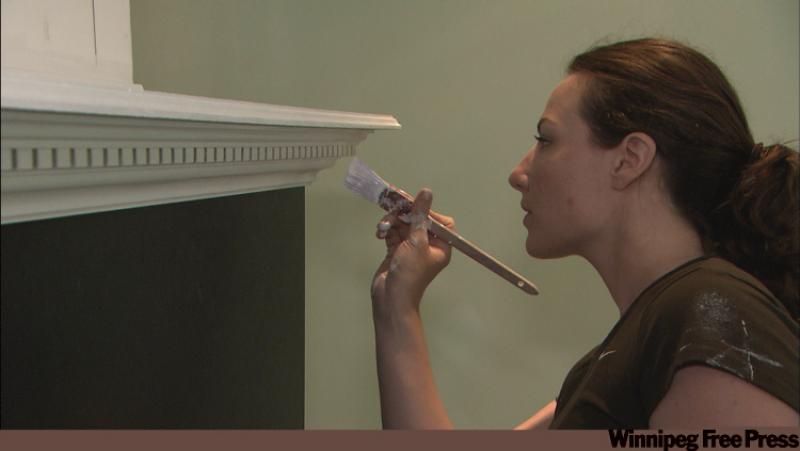Painting, from the point of view of people who may pick up a brush once every few years, is not a big deal. Pick a colour, invite over some friends, order a pizza, and paint away. It's a no-brainer. But from the perspective of a contractor who does this on a regular basis, and for a living, there are a few other things to consider, believe me. Painting isn't just black and white.
The primary consideration in any painting project is adhesion: You want to make sure the paint sticks to the wall. You can buy the best paint money can buy, but if the surface hasn't been prepared properly, your walls and ceiling could develop a good case of dandruff.
Buy your paint and primer before you start the preparation process, then follow the instructions found on the paint can down to the letter. Paint manufacturers want you to be successful with their product, so they detail what is required. Even before you open the can, what you do in the preparation process -- as outlined on the can, go figure -- will affect the outcome.
Preparation is the most time-consuming part of the process. The step you probably won't find on the instructions is what always separates the pros from the amateurs: Protect the surfaces that won't be painted. Use proper drop cloths to protect floors and furniture. Better yet, remove all the furniture, if possible. Just spreading old newspapers around won't protect your floor in the event of a paint spill.
The next step is washing the wall. Cooking grease and cigarette smoke are two of the main culprits you're trying to remove. Grease will prevent the new paint from sticking, and nicotine can eventually stain the new paint. TSP has been the traditional cleaner of choice, but again, read the instructions on the paint-can label to know what product can be used in conjunction with your brand of paint.
So we've cleaned the walls. Ready to paint? Not yet.
Now you need to fix the flaws in the drywall, plaster or trim. There are two different methods to use here -- additive, or filling in holes and cracks; and subtractive, sanding.
The trick is always to start with the sanding. Let's say there's a picture-frame nail hole that needs to be filled in. Obviously that's an additive repair, but by applying a light sanding directly around the hole, the filling compound will stick better and the wall surface will benefit from that extra thin layer of compound. Now I'm not talking about sanding off the existing paint; just a quick and light sanding for a couple of seconds -- just enough to roughen up the surface.
That's the big goal with paint adhesion: creating a surface that isn't perfectly smooth, so the primer has something to stick to. It gets into the microscopic grooves and grabs onto it. You want to use a fine-grit sandpaper, and there are sandpaper types that are purpose-built for painted surfaces. The trick is to change the paper often, because the paper gets gummed up quickly.
So if sanding a previously painted surface will make the new layer stick better, why don't we sand all the wall surfaces? It would require a huge amount of sandpaper, not to mention a lot of extra elbow work and time.
This is where primer comes into the picture. Primer, at its most basic, is simply a paint that seals the surface and provides the right adhesion and texture the new paint needs to stick. If you run your hand over primer after it has dried, it feels the same as a painted wall, but rest assured, the paint now has a good foundation.
There are all sorts of different formulations out there for different requirements, such as stain and mould suppression. There are even new paint formulations that have the primer built into the paint itself. Whatever brand of paint you end up using, it is very important that you also use the primer that was formulated to work with that specific paint. Brands that have a different chemical make-up don't perform properly when used together.
I'm not going to talk about specific brands of paints. There are so many brands and a wide range of price points. A professional painting contractor will tell you there are huge differences in the ease of use between a low-cost paint and an expensive paint. The ease of use can translate to a better-quality job, and more expensive formulations allow for better adhesion and better coverage, using less paint and fewer coats to get the desired results. This is good for everyone involved, including the environment.
-- Canwest News Service
Catch Mike in his brand-new series, Holmes Inspection, airing Thursdays at 8 p.m. ET/PT on HGTV. For more information, visit www.hgtv.ca.
Do you have a question about home renovations? E-mail mikemakeitright.ca.




